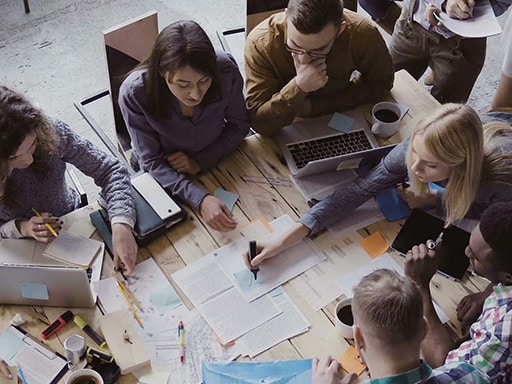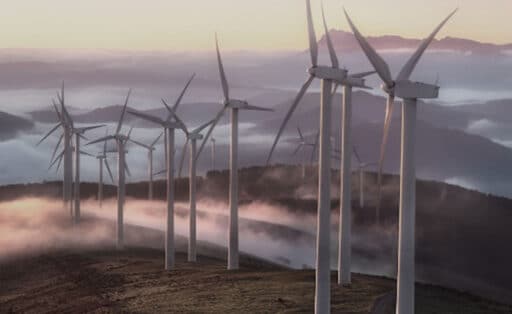The article focuses on key organizational disruptions in the wake of the corona crisis and formulates four questions you can ask yourself in your organization to ensure that corona experiences are translated into organizational learning.
How do you as a leader navigate the tension between old and new normal caused by the corona crisis?
The coronavirus pandemic is raging like a global and uncontrolled wildfire, resulting in a global crisis. It is affecting industries and businesses to such an extent that for the first time in many years, several countries are experiencing recession, extreme unemployment and mass bankruptcies, and more than a trillion people have experienced major personal consequences.
The Corona crisis is an example of how the global community is increasingly affected by complex and unpredictable problems. These crises (such as the financial crisis, health, climate and terror crises) usually originate far away from Denmark, and then, as a manifestation of the butterfly effect, they wash over the country as an unforeseen change that causes dramatic consequences far from the point of origin.
Crisis hurts while it lasts, but in a bigger, longer-term perspective, crises can also be catalysts for innovation and future growth that change the way we see the world. From a historical perspective, crises have shown that this is where we sow the seeds for the next great and innovative companies of the future. After the last financial crisis, companies like Uber, AirBnB, Netflix and Instagram were founded and quickly grew into global successes.
But it doesn't come naturally and often not from the established players on the field. Partly because they often have a lot of experience and achieved their success under different conditions and therefore find it difficult to free themselves from previous assumptions about what reality looks like and what it is that creates future success. Therefore, as one of the 'established', you must also realize that it takes something extraordinary to match the new reality and that what has brought success in the past is not the same as what will do so in the future.
The new normal
During the Corona crisis, we have no data to lean on because we haven't faced a similar situation before. This is a challenge as we live in a data-informed society where many of our decisions are based on data. In the current situation, we cannot project our data, but must instead challenge our usual assumptions about the future, where premises and framework conditions have suddenly changed. For example, we cannot gather in the same way as before and may forever have to think in terms of social distancing and not being too many people together. We also have to adapt to meeting more virtually, whether we like it or not. Working from home has made an unprecedented breakthrough and created a new reality of increased mobility. Companies such as PFA, Google, Facebook and Codan offer the option of working from home, in whole or in part. At Siemens, management says it will focus on performance rather than time spent in the office.
JOIN OUR COURSE
Build wellbeing and trust despite the distance
The "Managing Virtual and Hybrid Work Communities" course gives you the essential tools to increase productivity and well-being through remote management.
This is a course for those who work in management and want to know how to achieve strategic goals as an individual or organization through virtual collaboration.
Multi-faceted organizational impacts
Social capital will be challenged in the workplace in the future, with both advantages and disadvantages to be addressed. The downsides of more difficult meetings and increased working from home can lead to less closeness and fewer informal conversations between colleagues, making it harder to decipher behavior, and less random exchanges of ideas. We risk losing a sense of the "pulse" of the organization and the social 'glue' can disappear with the risk of loneliness among employees. Collaboration can also come to a standstill because people don't receive the same information from others and can't meet in person, but are too busy looking into their own device. Increasing insecurity and decreased motivation are also elements that managers will inevitably be confronted with, and it seems that working days are getting longer (+8.2 percent or +48.5 minutes)[1].
Fortunately, the coin has two sides and the organizational impacts of the Corona crisis are not only negative. There have also been some efficiency gains in the wake of the crisis. Meetings have become shorter (approx. 20%)[2] and more efficient, and many find that their productivity has increased when working from home as a result of fewer distractions and time-wasters like collegial small talk. Organizations and employees have taken a significant digital leap forward. They are finding new ways of being together that can add new dimensions to collaboration in the form of interdisciplinary cooperation and thinking holistically rather than in silos, as the quote below[3] from a senior research physician at Rigshospitalet shows:
We've seen how quickly we can actually change otherwise sluggish workflows, new guidelines are developed and implemented at lightning speed, we now get approvals for scientific trials in less than 48 hours, which normally takes six weeks or more. We've had to innovate in a way we never have before because of the pandemic. With a steep learning curve, the emergency situation has taught us to think outside the box....In hospitals, we used to be locked into rigid departments and centers and matrics, but now everything is quickly moved around across departments if it makes professional sense. We are all flexible in a way that was unimaginable two months ago. And holy shit, it's awesome,
- Arash Afshari, Head of Research at the Department of Anesthesia and Surgery at the Juliane Marie Center at Rigshospitalet
Another by-product of the Corona crisis is the realization that there may not always be a need to travel so much due to the virtual possibilities. As a consequence, you will be able to save a lot of money on travel, food and accommodation and also support a climate policy agenda to reduce CO-2 emissions. For the individual employee, less travel time and more working from home will provide greater flexibility, which can lead to greater family closeness, more time for exercise and reduced travel time/expenses to work. The latter perhaps to the extent that it will affect urbanization when distance to work no longer counts as the most important reason for housing choices. Finally, the Corona pandemic will likely also lead to an increased focus on employee wellbeing, as we have become more vulnerable in the embrace of globalization, which can quickly bring infection.
Regardless of the actual organizational impact of the Corona crisis, we are facing a societal and organizational paradigm shift with radical behavioral changes, which can be experienced both positively and negatively. It will certainly be new.
Cultures and structures in motion
The focus of businesses across the country right now is naturally on getting up to speed, ensuring employee safety and the all-important first firefight. But it's imperative that companies consider what the post-shutdown world will look like in the longer term
Darwin is often quoted as saying 'survival of the fittest'. But Darwin never said that. Instead, he talked about 'the fittest', the one who best knew how to adapt. According to Darwin, it was neither the strongest nor the most intelligent that necessarily survived, but the one who reacted best to change. In today's parlance, 'fittest' can be translated as being ambidextrous, which means having two right hands that enable leaders to deal with the existing and the new. The new, in particular, is building resilient organizations that can withstand the next crisis - because it WILL come.
Resilience in this context in the sense of flexible, agile and resilient. It is not resilience as the ability to withstand pressure, but resilience as the ability to learn and recover from pressure, crises and adversity. The resilient organization is not concerned with building management and control systems that ensure we avoid mistakes altogether, but is much more concerned with learning from mistakes. A simple but illustrative example of the difference between classic resilient solutions (resisting pressure) and resilient-robust solutions (flexible adaptation to pressure) is the Danish Road Directorate's new mobile crash barriers. The mobile crash barriers allow you to flexibly change the number of lanes in each direction in response to changing traffic pressure (adapt pressure) instead of expanding the highway network with additional lanes (resist pressure).
The big question, however, is whether managers can do it? Learning new methods may not be as difficult as learning to think in a new way. Organization professor Peter F. Drucker puts it very aptly in his 1980 book[1]: 'The greatest danger in times of turbulence is not the turbulence itself, but to act with yesterdays logic'. The risk is that you will only work with minor adjustments to current systems and approaches, even though the situation calls for new breakthroughs and new meaning-making. And the reason why this can be difficult is that this work takes place in the tension between an organizational culture that holds the organization firmly (old normal) and societal movements that demand a new normal from the outside. And what wins on that scale? Drukner himself is known to say that: 'Culture eats stratety for breakfast', which illustrates what leaders are up against.
Tips to emerge stronger from the Corona crisis
Being a visionary is about putting on the new 'glasses' and understanding how to catch the right waves of change and sense changes in the competitive and work environment. But it's about more than just being able to see the landscape. First and foremost, it's about reinventing your business to stay relevant. It's about the very basis of the company's existence. What is it that we, as a company, were created to solve and do for our customers and citizens? What exactly is our core service? And how does it fit into the new landscape? The answers are not obvious, but if we ask ourselves the right questions, we may be able to find the answers together. Below are some concrete suggestions for questions you can ask yourself as an organization:
What have we learned/experienced from the corona crisis
- What, we have discovered, were our strengths? What have we been able to do during the crisis that we don't usually do?
- What, we've discovered, were our weaknesses? What couldn't we do during the crisis that we wanted to do? Was there anything that made the situation worse?
Status and changing prerequisites
- What is the status of operations, finances, headcount, pipeline, locations, workflows, service degradation?
- What are the implications for our future?
How will it affect our work going forward? (What should we do differently?)
- Vision and purpose. What does the future look like in the next 2 years? What are possible scenarios?
- How will we perform in each scenario with the strengths and weaknesses we have?
- Strategies - what are the new benchmarks we need to set for ourselves and each other?
- How should we organize ourselves?
- What task and priorities: use of resources?
- Meeting styles - where does it make sense to meet physically/virtually? How to manage homework? Cross-collaboration?
- Building resilience/robustness of our organization/employees so we are more ahead of the crises?
What do we do from here?
- In the short term - what specifically are we doing differently, what can get in the way, what can support the plan?
- In the longer term - what can get in the way, what can support the plan?
The Corona crisis has given us a taste of what's to come with a possible recession, climate crisis or global pandemic. It is therefore crucial that we think about creating a more sustainable and resilient world, which requires us to change our mindset from short-term to long-term, from silo thinking to value chains, from homogeneity to diversity - to more sustainability and to many different ways of being and working together.





